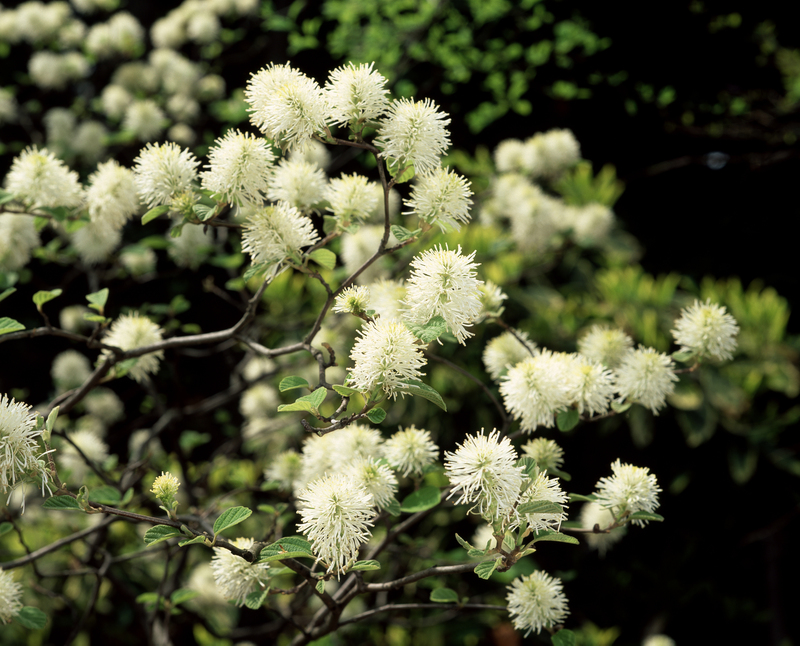Thrive Outdoors with These Essential Gardening Tools
Posted on 05/09/2025
Thrive Outdoors with These Essential Gardening Tools: Your Ultimate Guide
Gardening is more than just a relaxing pastime--it's a gratifying journey that connects you with nature while transforming outdoor spaces into vibrant sanctuaries. Whether you're nurturing a small balcony garden or managing a sprawling backyard, having the right gardening tools is crucial to ensure your efforts bear fruit. In this comprehensive guide, we'll explore the essential gardening tools you need to thrive outdoors, maximize your productivity, and enjoy every moment spent among your plants.

Why the Right Gardening Equipment Matters
A lush, flourishing garden doesn't happen by chance. While your green thumb and dedication play vital roles, your selection of essential gardening tools can make all the difference between frustration and flourishing success. The correct garden implements not only streamline your tasks but also help preserve your energy, protect your plants, and ensure longevity of your gardening practice.
- Efficiency: The right tools save time and effort, turning chores into enjoyable rituals.
- Plant Health: Clean, sharp tools reduce plant stress and disease transfer.
- Personal Comfort: Ergonomic designs prevent strain and injuries, allowing you to garden longer.
Essential Gardening Tools: The Ultimate List for Every Gardener
Let's dive into the core must-haves for every gardening enthusiast seeking to thrive in the great outdoors:
1. Hand Trowel - Your Mini Digger
Every gardener, from beginner to expert, knows the value of a sturdy hand trowel. This versatile tool is ideal for transplanting seedlings, digging small holes, mixing soil, and even extracting stubborn weeds. *Look for one with an ergonomic grip and stainless steel blade for durability and comfort*.
- Uses: Planting bulbs, transplanting seedlings, removing weeds, mixing soil amendments.
- Tips: Choose trowels with measurement marks on the blade for quick planting depth assurance.
2. Pruning Shears (Secateurs) - For Clean Cuts
Healthy growth and beautiful blooms rely on periodic pruning. Quality pruning shears help you trim dead or overgrown branches and flowers with precision, promoting new growth without damaging the plant. There are bypass and anvil types--bypass shears are perfect for live growth, while anvil shears suit dry, woody stems.
- Uses: Deadheading flowers, shaping shrubs, harvesting produce, removing diseased stems.
- Tips: Regularly clean and sharpen blades to prevent disease spread and ensure clean cuts.
3. Garden Gloves - Protecting Your Hands
High-quality gardening gloves are indispensable for keeping your hands safe from cuts, blisters, and dirt. Some gloves are designed for delicate tasks, like seed sowing, while others offer extra padding and protection against thorns and rough materials.
- Uses: Weeding, planting, pruning, handling compost or fertilizers.
- Tips: Choose gloves that fit snugly, are breathable, and offer sufficient protection for your tasks.
4. Garden Fork - For Turning Soil
Preparing healthy garden beds starts with loosening and aerating the soil. A robust garden fork digs deep, breaks up hard clumps, and mixes in organic matter effortlessly. It's especially handy in clay-heavy or compacted soils where a standard spade won't suffice.
- Uses: Breaking new ground, aerating soil, lifting root vegetables, turning compost.
- Tips: Look for forks with strong, rust-resistant tines and comfortable handles.
5. Spade or Shovel - Digging Power
No outdoor gardening toolkit is complete without a well-balanced spade or shovel. Spades are perfect for edging and transplanting, while shovels handle larger digging, moving soil or mulch, and planting trees. Choose a design and handle length that match your strength and garden needs.
- Uses: Digging planting holes, turning soil, edging lawns, moving heavy materials.
- Tips: Sharpen the blade regularly for clean cuts through roots and compact ground.
6. Watering Can or Hose - Nurturing Thirsty Plants
Water is life for your garden. A good quality watering can for gentle hand watering or a hose with adjustable nozzles for larger beds helps distribute water without waste. For more advanced care, consider drip irrigation systems or soaker hoses for consistent hydration.
- Uses: Watering seedlings, potted plants, flowerbeds, and lawns.
- Tips: Choose lightweight watering cans for smaller spaces; invest in a hose reel for tidy larger gardens.
7. Rake - Clearing Debris and Smoothing Beds
Rakes come in various designs--leaf rakes for clearing fallen debris, and garden/soil rakes for smoothing out soil and spreading mulch. This essential item helps maintain order and appearance in your outdoor garden.
- Uses: Removing leaves, leveling soil, gathering grass clippings, breaking up clumps.
- Tips: Steel rakes handle heavier materials; plastic or bamboo rakes are lighter for everyday tasks.
8. Wheelbarrow or Garden Cart - Heavy Lifting Made Easy
Transporting soil, compost, mulch, plants, and even garden tools becomes a breeze with a sturdy wheelbarrow or garden cart. These tools save your back and make quick work of otherwise laborious outdoor garden chores.
- Uses: Moving heavy loads, collecting yard debris, distributing mulch or amendments.
- Tips: Consider lightweight, rust-resistant models with pneumatic tires for ease of use and longevity.
9. Hoe - Weeding and Cultivation Champion
A hoe helps keep your garden beds weed-free and your soil aerated. Types like the draw hoe, stirrup hoe, and Dutch hoe cater to different beds and work styles. Essential gardening often means keeping on top of weeds to help your plants truly thrive outdoors.
- Uses: Cultivating soil, uprooting weeds, creating seed furrows.
- Tips: Match hoe blade width to your garden bed size and task needs.
10. Long-Handled Tools - Extending Your Reach
Long-handled versions of spades, forks, and hoes reduce back strain and extend your reach, making them excellent for larger plots and those with limited mobility. Having a set increases your comfort and efficiency outdoors.
- Uses: Digging, weeding, mulching, cultivating--all with less bending.
- Tips: Opt for lightweight fiberglass or wooden handles for easy handling and reduced fatigue.
Bonus Essentials for Modern Gardening Success
Garden Kneeler or Pad
A garden kneeler or pad cushions your knees and protects your joints during planting or weeding. Some come with side handles for easy rising, making them indispensable for gardeners of all ages.
Tool Sharpening and Cleaning Kit
Maintaining your tools extends their lifespan and keeps your gardening experience efficient and enjoyable. Include a sharpening stone, wire brush, and plant-safe cleaner in your arsenal.
Plant Markers and Measuring Tools
Organize your sowing schedule and garden layout with clearly labeled plant markers. Measuring tapes or rulers help with correct spacing and planting depth, enhancing your results.
Caring for Your Gardening Tools
To thrive outdoors season after season, proper garden tool maintenance is as important as the selection. Here's how to keep your essential gear in prime condition:
- Clean After Every Use: Rinse or wipe off soil and sap to prevent rust and bacterial build-up.
- Dry Thoroughly: Store only dry tools to reduce rusting and wooden handle decay.
- Sharpen Blades: Use a sharpening tool to keep pruners, shears, and spade edges keen.
- Oil Metal Parts: A light coating of lubricating oil prevents rust and keeps moving parts smooth.
- Store in a Dry Place: Hang up or store tools in a shed, garage, or toolbox to keep them protected from the elements.
Frequently Asked Questions About Essential Gardening Tools
What are the absolute must-have gardening tools for beginners?
Start with a hand trowel, pruning shears, gardening gloves, a spade, and a good watering can. These basics will enable you to perform most essential tasks needed to nurture an outdoor garden.
How often should I clean and maintain my garden tools?
Ideally, tools should be wiped down after every use, with a deeper cleaning and sharpening every few weeks or at the end of each gardening season.
Should I buy stainless steel or carbon steel garden tools?
Stainless steel resists rust and is easier to maintain, making it ideal for wet climates. Carbon steel is often stronger and can hold a sharper edge, but requires more care to prevent rust.
Is it worth investing in ergonomic gardening tools?
Absolutely! Ergonomic handles and lightweight materials reduce strain and fatigue, allowing you to enjoy longer, more comfortable gardening sessions.

Top Tips for Choosing the Right Garden Tools
- Test before you buy: If possible, handle tools in-store to assess balance and comfort.
- Invest in quality over quantity: Well-made tools may cost more upfront but will last far longer than budget alternatives.
- Read reviews: Learn from other gardeners' experiences to ensure durability and effectiveness.
- Consider your unique garden: Choose tools based on your specific plants, soil type, and landscape size.
Unlock Your Garden's Potential: Thrive Outdoors with the Best Gardening Tools
A successful outdoor garden starts with the proper essential gardening tools. With the right equipment, you'll not only work more effectively but also enjoy greater comfort, healthier plants, and a more fruitful harvest. Remember, caring for your tools is as crucial as choosing the best ones.
Whether you're a seasoned horticulturist or just discovering the joys of planting, investing in high-quality gardening equipment will ensure your outdoor gardening experience is rewarding and long-lasting. Equip yourself, get your hands dirty, and watch your garden--and yourself--truly thrive outdoors!
Ready to elevate your gardening experience? Revisit, upgrade, or build your collection of these essential gardening tools today, and enjoy the myriad benefits of a lush, lively outdoor space all year round.
```


